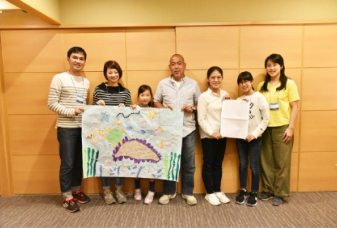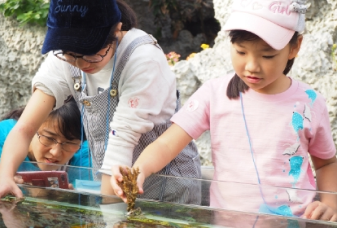SAVE the BLUE story
The article "SAVE the BLUE Story Protecting Coral Reefs" is published in the elementary school newspaper from June 2nd to July 21st, 2018 (the publication date is different in some areas).
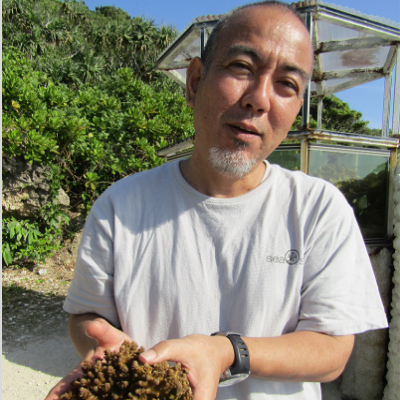
Have you ever seen the colorful and vibrant "coral reefs" in the sea? In Japan, it is widespread in the shallow waters of the subtropical zone, such as Okinawa Okinawa and Amami Islands. Many living things such as fishes gather around the coral reef. It not only protects the biodiversity of the sea, but also supports the lives of people with coastal cancer. The coral reef ginger, which brings various blessings and is called the "cradle of sea sea", is rapidly decreasing.
One of the causes is that coral bleaching due to global warming is progressing. Corals appear to be immobile, but they are actually animals. It lives in harmony with planktons, a plant called zooxanthellae that lives in the body.
Corals nurture their lives by receiving the nutrients produced by the zooxanthellae, which are produced by photosynthesis. Therefore, when the temperature of the seawater coral rises and the zooxanthellae is separated from the coral, only the white body of the coral, which has become undernourished, remains. The domestic wastewater that humans drain into the sea also weakens the body of corals.
There is a person who stood up saying, "Let's protect the important coral reefs." Koji Kinjo, who lives in Yomitan Village, Okinawa Prefecture, is a leading expert in artificial coral farming. We are making efforts to regenerate coral reefs by planting corals grown in the aquarium in the sea.
"SAVE the BLUE" has the meaning of "protecting the blue blue sea sea". In this story, we will introduce the activities of Kinjo Kaneshiro and the efforts of the cosmetics company Kose, which supports it.
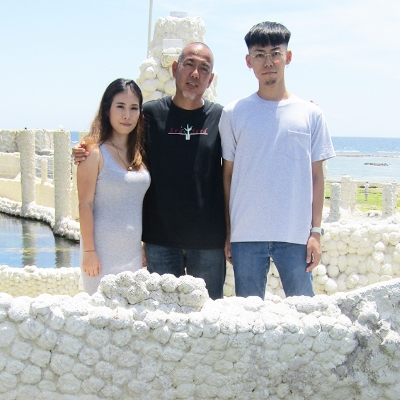
“Michura Umi, who has been a favorite since I was a child, has become very difficult." Koji Kinjo, who works on coral farming in Yomitan Village, Okinawa Prefecture, noticed the strangeness of the sea sea 20 years ago. It was 1998. When I went into the sea, the coral reef ginger, which had a bright color, turned white.
In that year, a phenomenon called "El Nino", in which the temperature of the sea surface temperature rises from the equator of the Pacific Ocean to the Peruvian coastal cancer in South America, occurs in Okinawa. The water temperature of the sea sea in Okinawa was much higher. As a result, the plankton plant called zooxanthellae, which had been photosynthesizing in the coral, has disappeared. The cause of bleaching was that the coral became malnourished.
"If the coral reefs are gone, there will be no fish, shrimp, or crabs around. We have to help the sea." Koji Koji, who was thinking that way, stopped the restaurant Inshokuten, which had been running until then, and said, "Let's plant coral that we have grown ourselves like planting trees in the sea." I decided.
Nonetheless, no one has succeeded in "coral planting" yet. At home, the third child was about to be born, but my wife Misae Nohara encouraged me, "I'm sure I can do it." "I like my dad who cleans the sea." A word from Jukiya Jukiya (22), the eldest son of an elementary school student, Koji Koji planted coral grown in the aquarium in the aquarium. I started to prepare for the event.
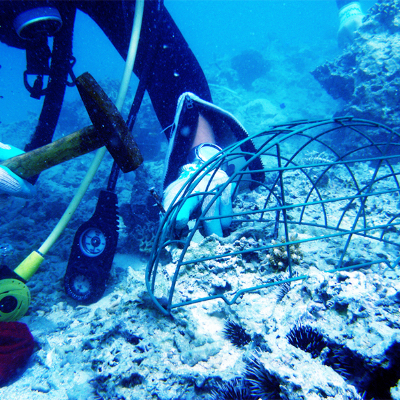
We plant coral seedlings in the sea and cover them with a basket to protect them - Koji Kinjo,
Koji Kinjo, who decided on the idea of planting coral forests, got the cooperation of the local fishing cooperative Gyogyo Kyodo Kumiai and Okinawa main island central Okinawa. Starting with the shallow water of Okinawa, which is located on the coast of Chatan Chatan Town in Okinawa, we started planting seedlings.
We started drilling holes in the rocks and plant seedlings one by one. When the coral broke due to the garbage thrown into the sea, the fishermen helped with the restoration. A new aquaculture facility has also opened in the nearby Yomitan Village Yomitanson. While suffering from lack of funds, coral farming and planting activities continued, and in 2008, the number of planted turnips reached 10,000.
However, "I was at a loss when I thought about the wide sea," said Kinjo Kaneshiro. At that time, the cosmetics company Keisho Hingaisha "Kose" offered to "protect the blue blue sea sea together."
At Kose, I was thinking about "activities that contribute to society and what to do" through a series of cosmetics called "Sekkisei." The bottle of "Snow Skin Spirit" is a deep blue lapis lazuli with a purple color, which is the same as the sea sea of Okinawa Okinawa. At that time, Kose's employee, Koji Tokita and Yasushi Tokita (49), who was the chief in charge, actually went to Kanagusuku Kinjo and Umiumi, and strongly felt the significance of coral planting.
In 2009, "SAVE the BLUE" project was established to be a part of the "Snow Skin Sekkisei" series.
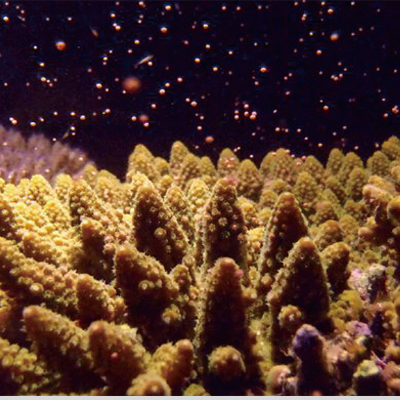
Cultured coral that lays eggs. A new life is living in the pink egg egg = Offering "Sea Sea Seed Seed" that operates a farm,
Coral spawning began in May. The crushed ones on the surface of the coral are called "polyps", and the round eggs are spawned from the holes.
"Even if the coral planted in the sea grows, it will not really take root without spawning." Koji Kinjo, who works on coral farming in Okinawa Okinawa, goes out to the sea on a boat and goes around regularly, saying, "There is no change. I continued to observe the ship. Finally, I confirmed with my own eyes the moment when the coral spawned in the middle of the night.
"Innumerable eggs were illuminated by the light of the moon, and the sea surface noodles were in pink. The sea was shining like a starry sky." My heart started to beat fast at the thought of a new life was born from the coral that was raised with love. It was 2004. At that time, it became a hot topic as "the world's first aquaculture coral spawning sanran".
In the "SAVE the BLUE" project launched by the cosmetics company "Kose", if you purchase the "Sekkisei Sekkisei" cosmetics Keishohin series, you will find the blue bottle. The area of the bottom is the same as that of cosmetics, and the same wide area of the seabed is used to plant and attach cultivated coral. And the coral planted in 2009, the year of the first year, spawned in the third year.
The people who work at Kose were pleased with the good news. "Our work has led to the protection of the blue sea." Everyone feels like that.
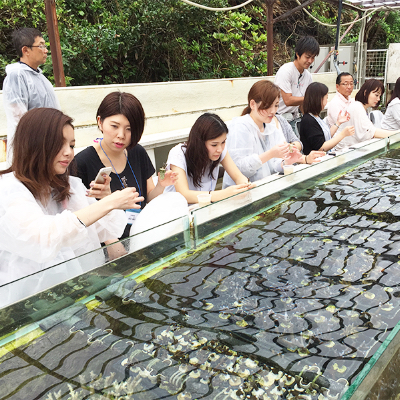
When planting coral in the sea, first make seedlings. Cut the grown coral branch with scissors, put the branch in the pedestal, and fill it with sand. After growing it in the aquarium for about 4 months, it is planted in the sea.
The "Coral Study Abroad Ryugaku" sponsored by the cosmetics company "Kose" is a place where you can learn about coral, including the experience of making such seedlings. I'm doing it at "Sango Batake" in Yomitan Village, Okinawa Prefecture, which is run by a coral farmer, Koji Kinjo. Most of the staff members are cosmetologists who give advice to customers on how to take care of them and how to use cosmetics.
Each of the cosmetology staff, Tomomi Eme, is a participant in the "Coral Study Abroad Ryugaku" that was held in November last year. My hobby is scuba diving, and I was worried that "coral reef ginger is decreasing" while I was diving in the sea of Okinawa Okinawa. "I wanted to take the opportunity of studying abroad in coral to do what I could do to protect the coral reefs. We are telling this to our customers together with the dealers Hanbaiten, "says Goume Eme.
This is the 10th year since Kose started "SAVE the BLUE", which nurtures corals. This project is supported by people who use the cosmetics Keishohin series called "Sekkisei Seisei" and people who work at Kose.
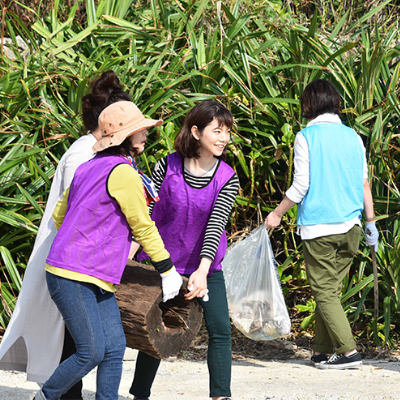
To protect the coral reefs, it is necessary to clean the sea. Koji Kinjo, a coral farmer from Yomitan Village, Okinawa Prefecture, came up with an event called "Clean Pick" to pick up garbage that is washed away by coastal waters. Let's work as a team for the amount of garbage picked up, so to speak, the "Olympic Games for picking up garbage". Through the event, there is also the meaning of "getting a review of how each life should be." Five years ago, the first national convention in Okinawa Okinawa was opened, and it is being held in various parts of Japan.
As part of the "SAVE the BLUE" project promoted by cosmetics company Keisho Hingaisha Kose, I want to experience "clean pick" at "Coral Study Abroad Ryugaku" where I learn about coral. increase.
Participants are cosmetology staff and employees of the shop who give advice on how to use cosmetics. At the coastal waters near "Sango Batake", the farm of Kinjo Kaneshiro, the whole team will work hard to pick up the garbage. By igniting Kinjo Kaneshiro's passion, we were able to work together well." Mr. Masumi Tatsuta, one of the Kose employees who planned the "Coral Study Abroad Ryugaku", said so.
Mr. Tatsuta Tateda gave a lecture at the university about the efforts of "SAVE the BLUE". Students learned that while working at a company, they can contribute to social activities such as environmental protection.
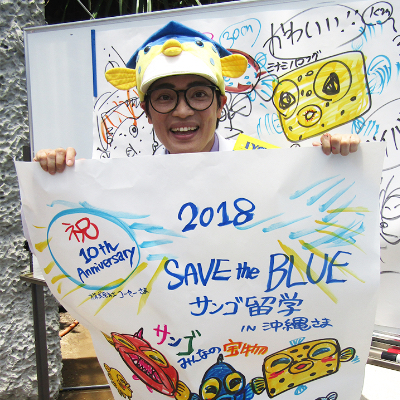
This year, the "International Kokusai Coral Reef Year" is a global coral conservation activity. The international network "International Coral Reef Initiative" is promoting it.
Sakana-kun, an honorary doctor at Tokyokaiyo University, who serves as the ambassador in Japan, is a visiting associate professor at the end of May, Okinawa Prefecture. Visiting Yomitanson in Okinawa. "Coral Study Abroad Ryugaku" (cosmetics company Keisho Hingasha) is held at "Sango Batake" run by coral farmer Koji Kinjo. It has appeared as a special lecturer of "Kose" sponsored by Sango Batake. "If the coral reef ginger is fine, the sea friends are also fine," said Sakana-kun. While drawing an illustration, I explained about the ecosystem of the sea.
In order to regenerate coral reefs that are weakened by the rise in the temperature of seawater due to global warming, it is necessary to consider various methods. Kanagusuku Kinjo, who researches the cultivation technique while growing about 120 kinds of coral, says that the coral that is hard to whiten even near the water surface where the sun's knees fall and pour. I succeeded in raising them.
The reason was that I moved the coral from a deep place in the aquarium to a shallow place so that the children could see the spawning situation up close at the observation meeting. The work of moving the coral left over from the high water temperature to a shallower place and adapting it to the environment was repeated.
"I want to increase the number of strong corals that are bleached and connect them to the regeneration of sea." Kinjo Kaneshiro's challenge will continue.
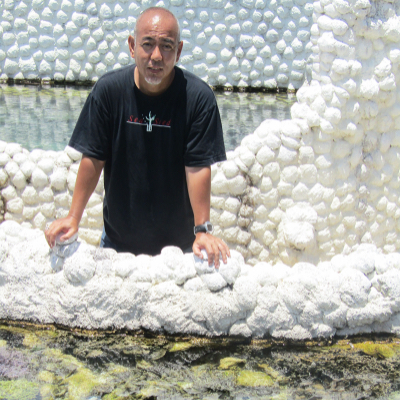
"Sango Batake", which is run by Koji Kinjo of Yomitan Village, Okinawa Prefecture, is a "land-based coral reef" that was raised in a water tank on holidays. A large number of family members came to see "Kanagusuku Coral Reef". One day in May, boys came over there. There was a lot of garbage such as bottles, cans, and plastic in the plastic bag that I picked up.
"I was in the sixth grade of elementary school at my hometown. He picked up the garbage from the coastal area nearby," said Kinjo Kaneshiro. If left alone, these trash will be blown away by the wind and threaten the environment of the living creatures in the sea. Kinjo Kaneshiro and his friends say, "I am very glad that more children are stepping up and want to clean the sea even a little.
A project of "SAVE the BLUE" by the cosmetics company "Kose", which has been in its 10th year this year. Together with Mr. Kinjo Kaneshiro, we will promote efforts to plant corals in the sea, and the water temperature of the sea will become higher due to the spawning of cultivated corals and global warming. It may have been the result of producing "resistant coral" that is hard to die.
"The environment has been destroyed by the actions of human beings such as development and industrial activities. However, if the way humans are involved is improved, the natural environment will recover. I will do it. " Kinjo Kaneshiro tells the story to the children of Sango Batake, who are learning about the environmental problems of the sea sea.
"I would like to thank the children for nature and become adults who live with nature." I would like to ask Kinjo Kaneshiro and "SAVE the BLUE".

Impressions / Impressions Contest
"SAVE the BLUE Story" depicting the 10 years of Kose and Kaneshiro in collaboration with the Mainichi Newspapers. From June to July 2018, we held an impression and impression contest.
Impressions Contest (4th-6th grades)
Ms. Mako Shimokawa, 6th grade elementary school student in Ota-ku, Tokyo
Coexistence of nature and humans
After reading this "SAVE the BLUE Story to Protect Coral Reefs", I learned for the first time that coral reefs, which I had only seen on TV and the Internet, were bleached due to global warming. Then, when I learned that the bleaching of corals would eliminate the fish, crabs, shrimp, etc. around me, I came up with the idea of "I want to protect the corals" that I had never thought of before.
Knowing that Mr. Kaneshiro had quit the restaurant he had been doing and tried to start aquaculture of coral that no one had succeeded in order to protect the coral, I thought I would do something unprecedented. Since there is no such thing, I realized that Mr. Kaneshiro wanted to protect the coral with a very strong feeling. Also, I thought that Mr. Kaneshiro, who can make a very courageous decision, is amazing.
And I felt that Mr. Kaneshiro and the people of Kose are connected with a common idea of protecting corals through the project.
And, in order to prevent the global warming that causes coral bleaching from progressing even a little, I also walk and bicycle rather than cars so as not to emit the gas of the car, which is one of the causes. , I wanted to use the train again. Also, as a result of the project, I learned that resistant coral was born, and I thought that Mr. Kaneshiro, who created resistant coral in addition to coral farming that no one had achieved, was a great man.
After reading this story, I learned about corals that are in danger because of humans, and I strongly felt that I wanted to protect them. To that end, I usually felt the gratitude of nature, and decided to review how I relate to nature from the small things I can do myself.
Impressions Contest (1st to 3rd grade elementary school students)
Hana Kanamaru, a first grader in Nerima-ku, Tokyo
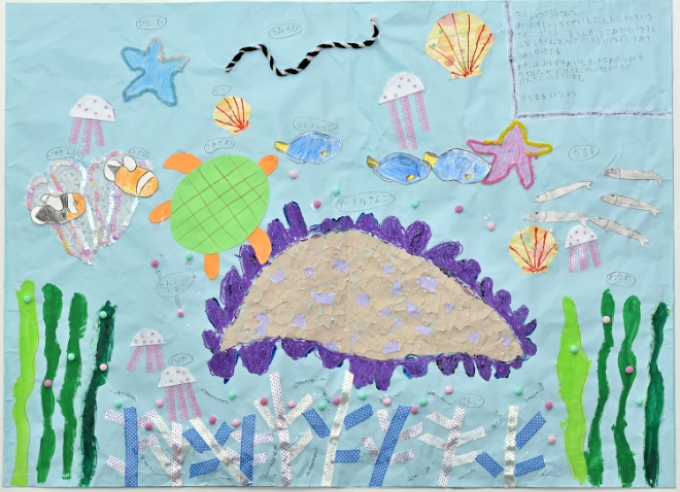
Introducing the judges
REPORT
"Study abroad in coral"
What is "study abroad in coral"?
Kose conducts "study abroad in coral" in Okinawa. Many Kose employees and business partners are learning about coral and the importance of nature conservation in the sea through this "study abroad in coral". At the "Study Abroad in Coral" held in November of this year, Ms. Mako Shimokawa, a sixth grader, and Ms. Hana Kanamaru, a first grader, who won the highest award in the impression and impression contest of "SAVE the BLUE Story" We invited each family!
 Lecture by Mr. Kaneshiro
Lecture by Mr. Kaneshiro
On the first day of arriving in Okinawa, Mr. Kaneshiro talked about activities to protect corals and his steps with Kose. We presented Mr. Kaneshiro with his thoughtful impressions and impressions.
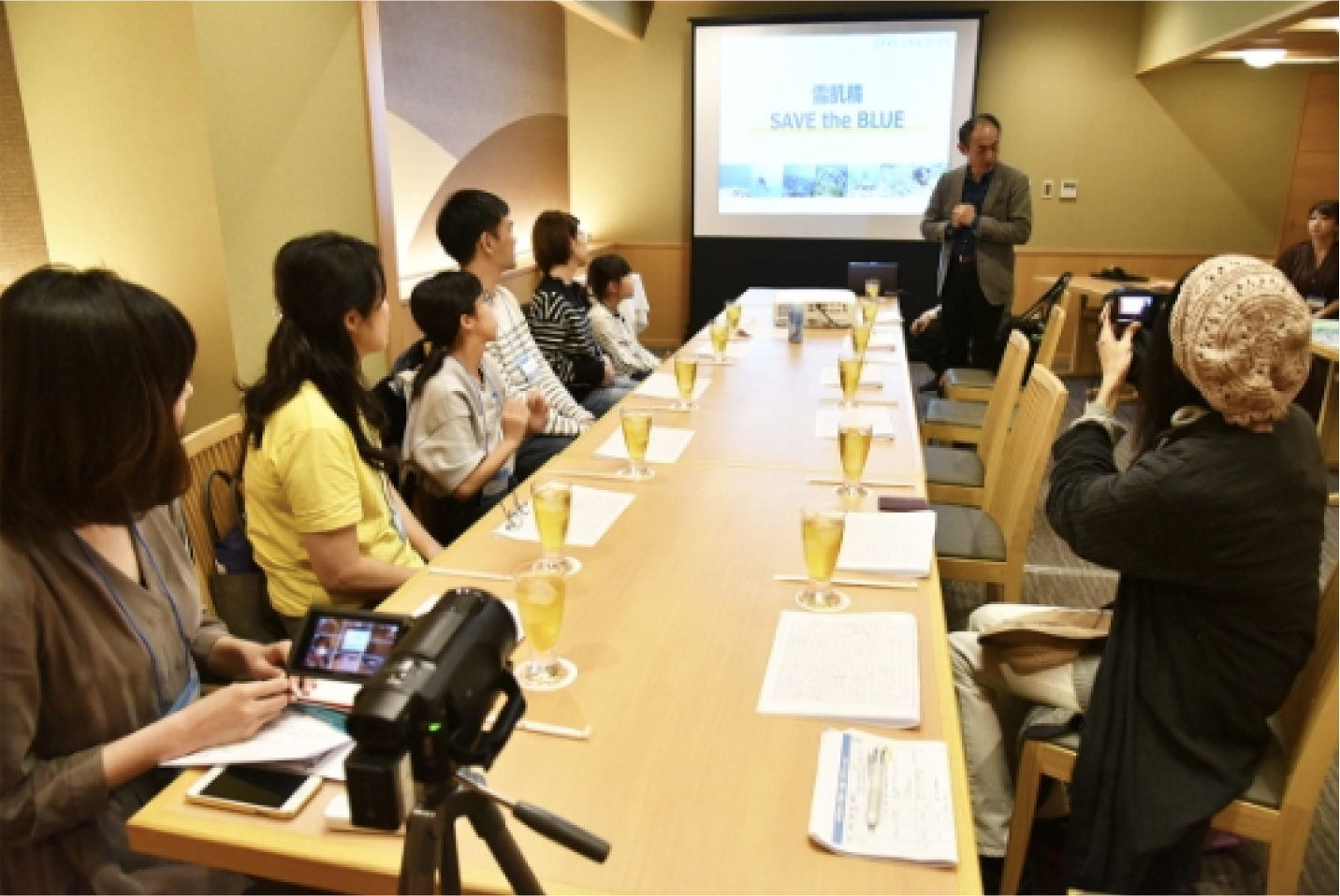
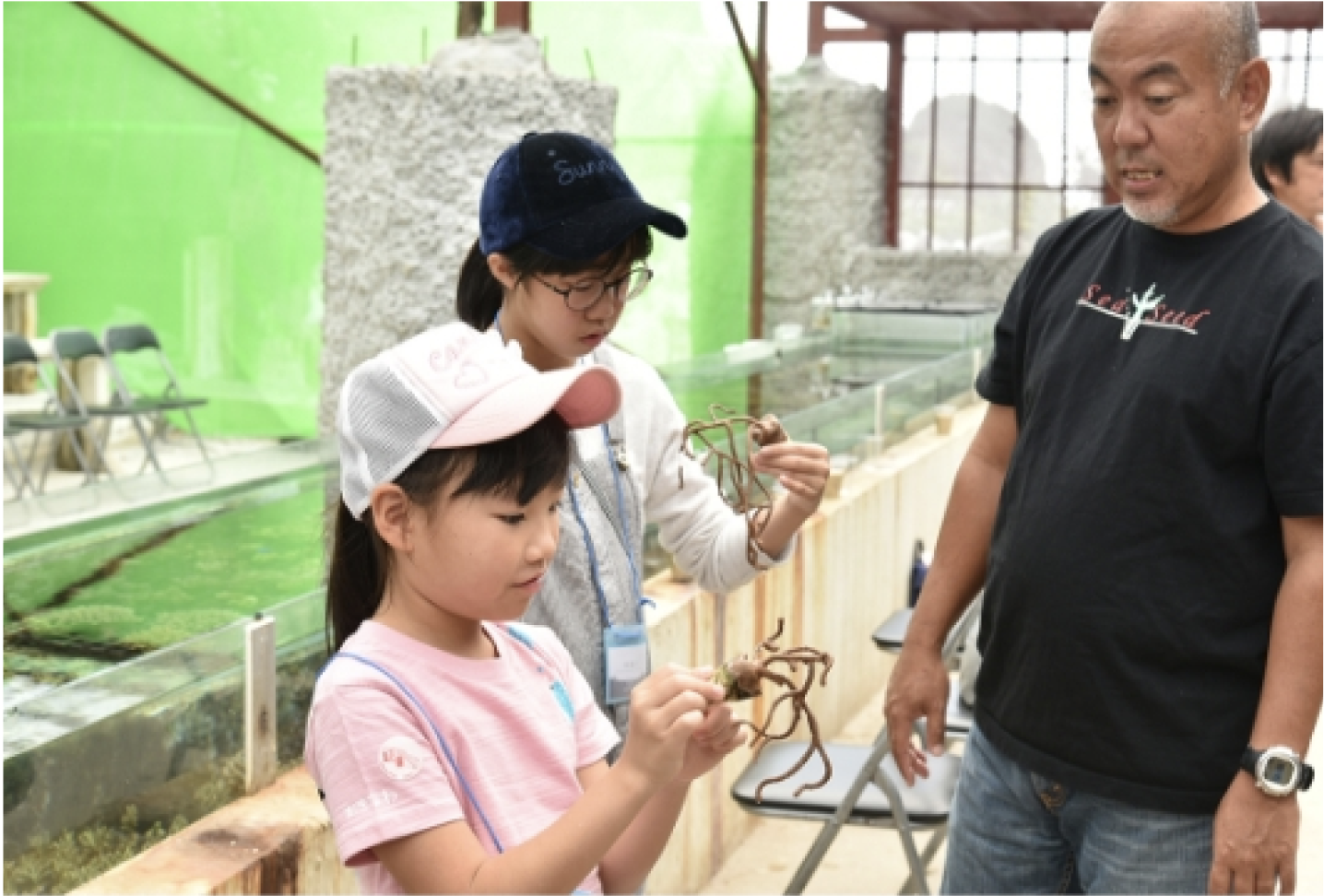
 Coral division experience
Coral division experience
On the second day, we had a coral division experience while receiving explanations from the "sea seeds". Both of us are very interested in the corals and creatures we touch for the first time! I was relaxed and listened to Mr. Kaneshiro's explanation seriously!
Summary
The two and their family actually met Mr. Kaneshiro, the main character of the story, in Okinawa and learned a lot. The two, who love nature, including the sea, strongly said, "I want to convey the importance of coral to my school friends!" We hope that a small coral ambassador will be born and that Kose's environmental protection activities will lead to more people.
